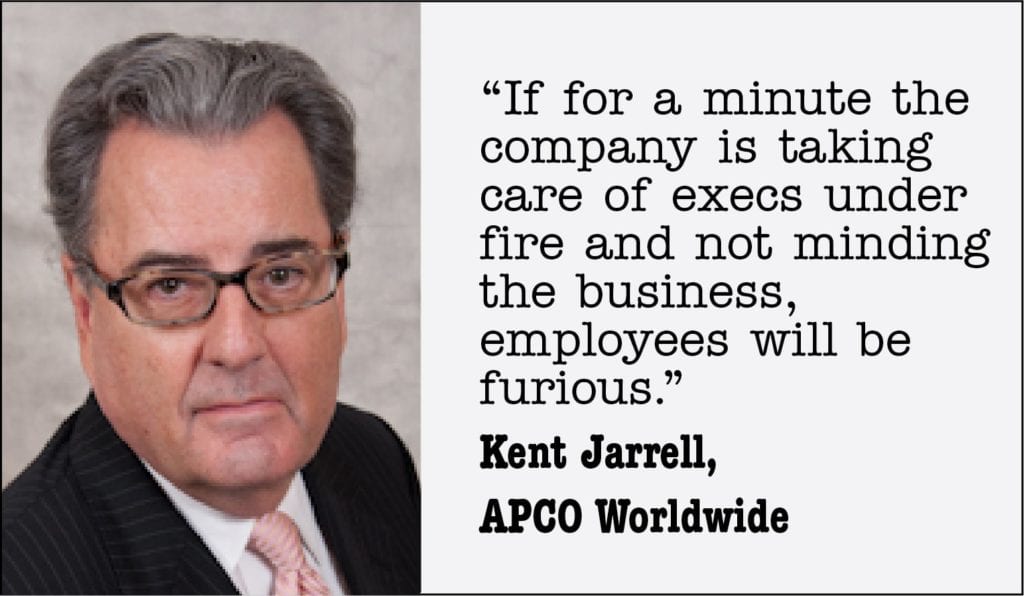Since becoming an original digital darling after its IPO in 1996, and surviving—even thriving—during the dot-com slash-and-burn in the early 2000s, Yahoo has since seen a slow erosion of its tech standing. Struggling with its business model, the company rejected a bid from Microsoft to acquire it for $44.6 billion in 2008, and has since been rocked by several large layoffs in recent years.
Then, in Sept. 2011, CEO Carol Bartz, who had replaced cofounder Jerry Yang at the post in Jan. 2009, was fired, with Bartz issuing a biting “farewell” e-mail—unusual behavior for a departing CEO from a major company. Then, in early 2012, Scott Thompson, who formerly led PayPal, was brought on to replace interim CEO Tim Morse. Optimism ran high in tech circles that Thompson could right the Yahoo ship. Then, on May 3, 2012, the company received another blow: Thompson was accused by a Yahoo investor of lying on his résumé—stating he had degrees in computer science and accounting at Stonehill College in Easton, Mass., when in truth, he had earned only the accounting degree. Thus ensued the latest PR firestorm to hit corporate America.
FAMILIAR DRILL
If you’re one of Yahoo’s 14,000 employees, the controversy is just one in a long line of distractions (including Thompson’s April announcement that 2,000 workers would be laid off by the end of 2012). On the afternoon of May 4, after the discrepancy was revealed, Kara Swisher of the blog AllThingsD published an e-mail sent by Thompson that basically stated to keep their minds on work while the matter was being investigated.
Then, it was reported that Thompson later apologized twice to his employees, yet the damage had been done, with several workers giving updates on the situation to Swisher throughout the week. Clearly they aren’t a happy bunch at Yahoo.
Which begs the question, how does communications handle employees internally in the event of a very public crisis, one that involves top leadership? Calls to Yahoo to talk about the internal situation went unanswered. But we did talk to three employee communications/crisis experts for insights.
BEST ASSETS
 |
A situation like Yahoo’s, in which employees are left hanging during a crisis, is a dangerous one, says Kent Jarrell, executive director and lead of the litigation and material events practice at APCO Worldwide.
“Employees are one of your most important assets,” says Jarrell. “If something negative is happening to your company and you’re not communicating with your workers, you lose their trust.”
Workers have an emotional connection with a company and if that connection is broken, it will affect them, continues Jarrell. Disgruntled employees can leave, badmouth the company or become a whistleblower, scenarios that already have played themselves out at Yahoo.
The trick to handling crises of this magnitude is knowing how, when and what to communicate, says Jarrell. Here are some steps to consider:
1. Communication has to be consistent with the company taking the right steps. “If for a minute the company is taking care of execs under fire and not minding the business, employees will be furious,” says Jarrell.
2. No spinning your way out. Communicate clearly that the correct actions have been taken to get out of the crisis.
3. Timing is everything. If you warn employees before a crisis hits, they may ask what all the fuss it about. However, if you tell them too late, you’ll be accused of inaction.
4. The messenger is important. “Start with the person who employees usually hear from, but match the right person with the severity of the incident,” says Jarrell. If the CEO is involved, it might not be appropriate for him or her to talk. “Then explain why the CFO or head of HR is talking and why the CEO isn’t,” he says.
 |
Dr. Gabriela Cora, a leadership coach and consultant, agrees that it wouldn’t be in an under-the-microscope CEO’s best interest to make a public statement. “A board chairman or top VP should probably take over and put out consistent messaging that puts employees at ease,” says Cora.
But what about an apology, like Thompson’s? Something heartfelt might be good, but in a big crisis, it may lose its power, says Cora. “In general, I prefer empathy over apology, because you connect, feel their pain, put things in perspective and move on,” she says.
MEDIA MESS
Keeping employees from talking to the press can be tricky business, because if you tell them not to, they’ll do it, says Jarrell. “You’ve got to explain why it’s in their best interest not to talk,” he says. It all boils down to a solid employee communications plan in the first place, says Lisa Cesaro, public relations manager at DNC Parks & Resorts in Yosemite National Park. Cesaro deals mainly with crises brought on by natural disasters like floods or rock slides, but the concept of having a plan and communicating honestly and often to employees before a crisis strikes is a universal one.
“Not only does this keep employees from going to the press on their own, it ultimately pays off in morale and improved services to guests,” says Cesaro.
On Friday, May 11, Yahoo’s Thompson reportedly told senior staff that he never provided his résumé to Yahoo during the search process, hinting that executive search firm Heidrick & Struggles was responsible for the embellishment—an assertion that Heidrick vehemently denied. Then, on Sunday, May 13, Thompson stepped down as CEO. He was the fourth Yahoo CEO in five years to leave the company. Clearly the Yahoo internal communications staff has its work cut out for them in the coming months. PRN
CONTACT:
Kent Jarrell, [email protected]; Gabriela Cora, [email protected]; Lisa Cesaro, [email protected].
Follow Scott Van Camp: @svancamp01
